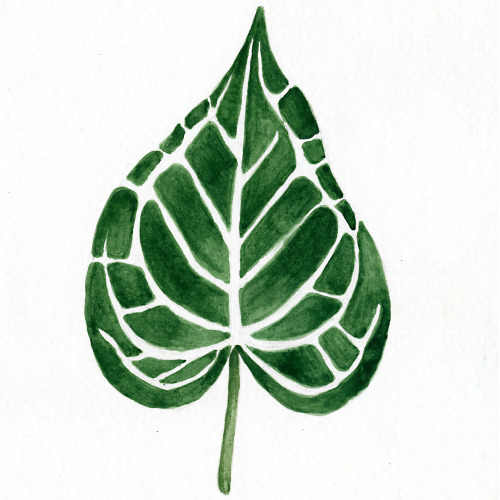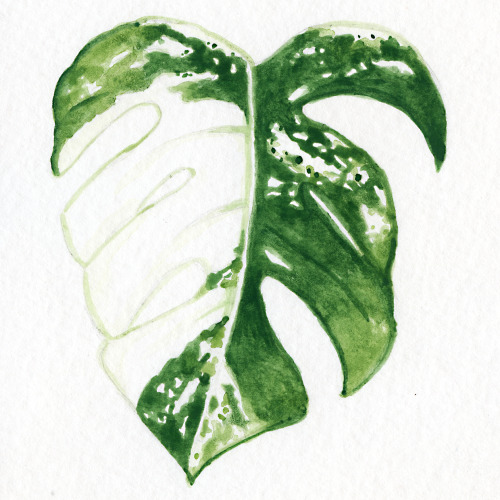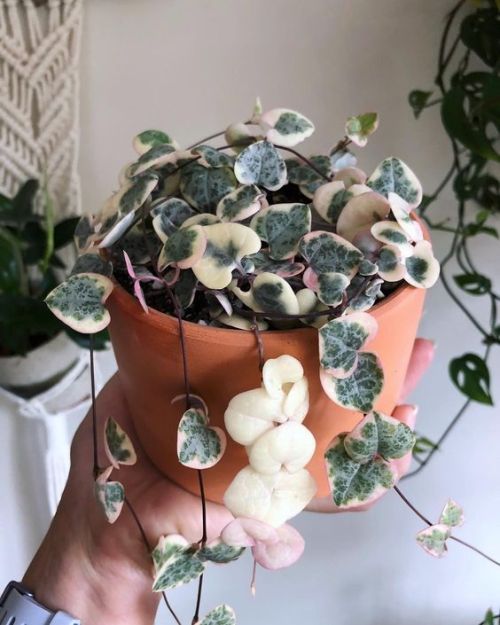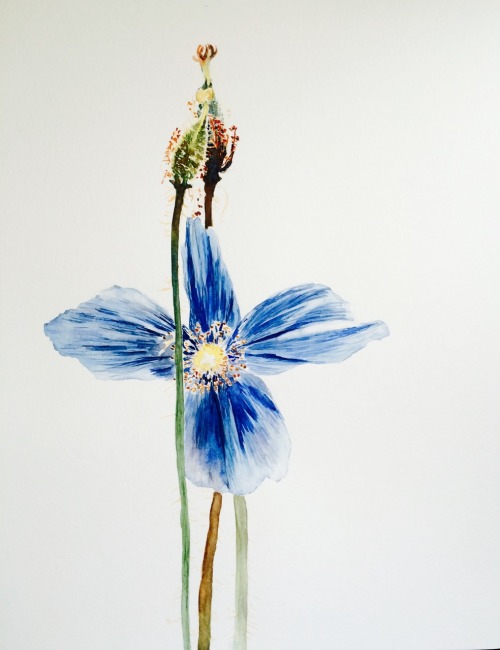#rare plants
Wishlist Plant Watercolor Paintings(on Instagram) by Marisa Renee
Monstera Deliciosa Albo Variegata, Anthurium Crystallinum, Alocasia Frydek
I made these
Post link

Our youngest and alpha of the group, Mochi.

She is our 1 year old Shiba. When we joined our family, she was definitely into my houseplants and outdoor plants.
I was able to train her not to touch the indoor plants, she quickly noticed the change in my soul, energy and voice
However, she has been dedicated to destroying and eating anything I attempted to plant in my garden bed. Last year I grew a lot of stuff from seed and I was so damn excited and she ate them all, like the whole thing, she would even pull the roots!
Solution: Next month my husband is going to build a wood cover, so it stops her from getting in (Evil laugh).
Have you trained your dogs? Are they interested in your houseplants?


Plants and Pups

The next few posts, I’ll introduce you to my three gorgeous dogs and a plant or two.
This is Kenji, a Chihuahua- Dachshund mix. He loves being close to my plants and under the sun. He also loves to cuddle!
The plants featured:
-Elegia tectorum
-Tibouchina heteromalla (flower)
Do you love when your dogs have a good relationship with your plants?

Herbs Bed Progress Check ✅
I just reorganized my herbs last month and look how everything is adapting well. I did cut my rosemary all the way down, one of them was really stressed after the move, but hopefully will come back.
The highlights are my new free tomato plant, the lemon balm growth





I’m so happy to see my new anthuriums grow so fast! This is an Anthurium Hookeri, she was overwatered and getting too much direct sunlight. As soon as I changed that, she started getting back her dark green color and it is giving me so many new leaves!

Such an intriguing cactus! Slow grower and super cool to have in your collection! #trichocereusbridgesii




Super happy to see my Monstera Siltepecana grow. I noticed a huge improvement after I added the pole for support and humidity.
As many monsteras, let the soil dry in between watering sessions and provide medium to bright indirect light.





Can we all scream for a minute? Look who joined my plant fam! Anthurium hookeri (bird’s nest anthurium) Isn’t she gorgeous? Comment a and get excited with me!
She is labelled as a bird nest anthurium. She does have red veins and a gorgeous flower in the last stages.
I didn’t get it from a normal retail shop. In our area one day a year, 9 wholesale nurseries open the door to the public. I saw her from afar at one of them, screamed and without researching or anything, I knew she called my soul. Because of the event, she was also only $35 (for that size omg!)
I’m still in full research mode, since this is a rare plant in my area (meaning she is not widely available), I’m honestly not sure if the label is accurate or not. Based on what I’ve found, most sold ones are hybrids and not the actual species.
Do you grow this baby? Share any insights or tips with me!

Have any of your plants been mislabeled?
Now that the fenestrated leaves are fully open, definitely can say it is a rhaphidophora decursiva. They were mislabeled.
Regardless, I’ve enjoyed growing her for a bit over a year. When I first saw the first fenestrations, I wanted to cry
I definitely love the dark green color and the texture of the leaves.



What do you like about your current favorite plant? Reblog and share it with me.


New Office Shelves! How many plants do you see? Do you recognize the bottle used in my pothos on the top left?
We took the bookshelves out and Jared built new ones on the wall. This opened up the space a lot in this room and gave us more space for books & plants of course.
(Disclosure: Books are to my husband, what plants are to me )

Wollemia nobilis …her lineage is so ancient, I might as well be shaking hands with a dinosaur.

The tecate cypress is a relict. Its tiny geographic distribution encompasses a handful of sights in southern California and northwestern Mexico. It is a holdover from a time when this region was much cooler and wetter than it is today. It owes its survival and persistence to a combination of toxic soils, a proper microclimate, and fires that burn through every 30 to 40 years. However, things are changing for the Tecate cypress and they are changing fast. The fires that once ushered in new life for isolated populations of this tree are now so intense that they may spell disaster.
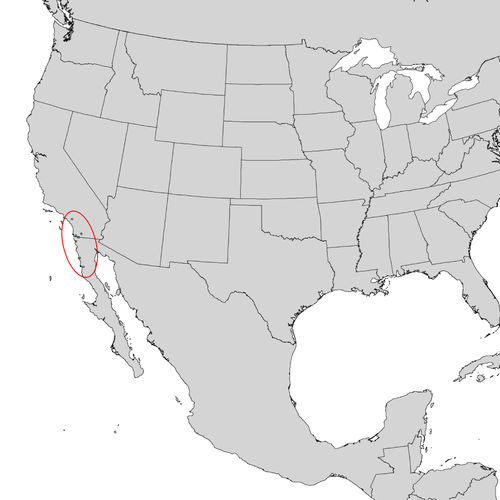
The taxonomy of the Tecate cypress has undergone a few revisions since it was first described. Early work on this species suggested it was simply a variety of Cupressus guadalupensis. Subsequent genetic testing revealed that these two trees were distinct enough to each warrant species status of their own. It was then given the name Cupressus forbesii, which will probably be familiar to most folks who know it well. Work done on the Tecate cypress back in 2012 has seen it moved out of the genus Cupressus and into the genus Hesperocyparis. As far as I am concerned, whether you call it Cupressus forbesiiorHesperocyparis forbesii matters not at this point.
The Tecate cypress is an edaphic endemic meaning it is found growing only on specific soil types in this little corner of the continent. It appears to prefer soils derived from ultramafic rock. The presence of high levels of heavy metals and low levels of important nutrients such and potassium and nitrogen make such soils extremely inhospitable to most plants. As such, the Tecate cypress experiences little competition from its botanical neighbors. It also means that populations of this tree are relatively small and isolated from one another.

The Tecate cypress also relies on fire for reproduction. Its tiny cones are serotinous, meaning they only open and release seeds in response to a specific environmental trigger. In this case, its the heat of a wildfire. Fire frees up the landscape of competition for the tiny Tecate cypress seedlings. After a low intensity fire, literally thousands of Tecate cypress seedlings can germinate. Even if the parent trees burn to a crisp, the next generation is there, ready to take their place.
At least this is how it has happened historically. Much has changed in recent decades and the survival of these isolated Tecate cypress populations hangs in the balance. Fires that once gave life are now taking it. You see, decades of fire suppression have changed that way fire behaves in this system. With so much dry fuel laying around, fires burn at a higher intensity than they have in the past. What’s more, fires sweep through much more frequently today than they have in the past thanks to longer and longer droughts.

Taken together, this can spell disaster for small, isolated Tecate cypress populations. Even if thousands of seedlings germinate and begin to grow, the likelihood of another fire sweeping through within a few years is much higher today. Small seedlings are not well suited to cope with such intense wildfires and an entire generation can be killed in a single blaze. This is troubling when you consider the age distributions of most Tecate cypress stands. When you walk into a stand of these trees, you will quickly realize that all are of roughly the same age. This is likely due to the fact that they all germinated at the same time following a previous fire event.
If all reproductive individuals come from the same germination event and wildfires are now killing adults and seedlings alike, then there is serious cause for concern. Additionally, when we lose populations of Tecate cypress, we are losing much more than just the trees. As with any plant, these trees fit into the local ecology no matter how sparse they are on the landscape. At least one species of butterfly, the rare Thorne’s hairstreak (Callophrys gryneus thornei), lays its eggs only on the scale-like leaves of the Tecate cypress. Without this tree, their larvae have nothing to feed on.

Although things in the wild seem uncertain for the Tecate cypress, there is reason for hope. Its lovely appearance and form coupled with its unique ecology has led to the Tecate cypress being something of a horticultural curiosity in the state of California. Seeds are easy enough to germinate provided you can get them out of the cones and the trees seem to do quite well in cultivation provided competition is kept to a minimum. In fact, specimen trees seem to adapt quite nicely to California’s cool, humid coastal climate. Though the future of this wonderful endemic is without a doubt uncertain, hope lies in those who care enough to grow and cultivate this species. Better management practices regarding fire and invasive species, seed collection, and a bit more public awareness may be just what this species needs.
A way to combine kokedama with my aquascaping hobby: planting ranunculus inundatus into a kokedama ball
Post link
I want a varigated string of hearts so bad but I haven’t seen one in any store…! D:::: I need one for my collection
Post link
Himalayan blue poppy
Inspired by Uncommon Beauty shot by Gabriela Herman - decided to do this floral watercolor
Post link
Awkward Botanical Sketches #5: Leaves of Yellowstone Edition
Awkward Botanical Sketches #5: Leaves of Yellowstone Edition
Earlier this month, I met up with Eric LoPresti and others at Yellowstone National Park to help take a census of Abronia ammophila, a rare plant endemic to the park and commonly referred to as Yellowstone sand verbena. Abronia (a.k.a. the sand-verbenas) is a small genus of plants in the family Nyctaginaceae that is native to western North America. Several species in the genus have fairly limited…

The elusive monotropa uniflora, also known as the ghost plant, ghost pipe plant, Indian pipe plant, or the corpse plant. It is an uncommon type of parasitic plant that hosts a fungi which takes energy from photosynthetic trees.
Post link
Wishlist Plant Watercolor Paintings(on Instagram) by Marisa Renee
Monstera Deliciosa Albo Variegata, Anthurium Crystallinum, Alocasia Frydek
Post link

